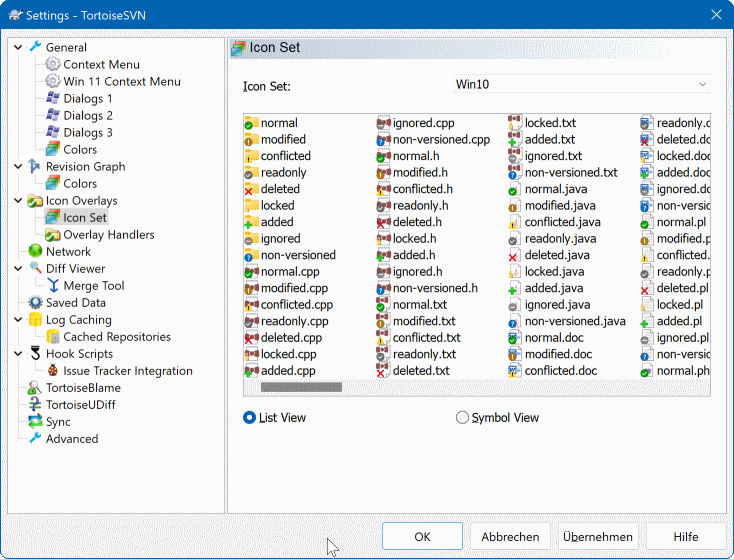
Go into Commit, change the Username to whatever you like. If not it will comit under your domain name. If you haven’t set your username for Mercurial yet, you may want to do so. Then it will convert the SVN repository to mercurial with all the historyĬlone from the repository, Pull the changeset back and you will get all the code files Notices %ProgramFiles%\TortoiseHg\hg convert “” “” Go to Security, select a group or the user, check Full Control permission.Ĭreate a new folder for repository and check the permission as above.Ĭonvert the SVN repository to Mercurial repository Right click on that folder, Sharing & Security, select Share this Folder. Make sure it shared and all the developers’ve got full permission. I create a folder for the repository in the version control server.
TORTOISEHG OVERLAY ICON SERVER HOW TO
This article will show you how to move your existing projects in SVN to a mercurial repository. Move the codebase from SVN to Mercurial without keeping changesetsĪs our version control server is in an internal networks and got access only by developers, I don’t bother to set up the whole mercurial server up. You will need to set TortoiseHg in both your server and you client. The interface and the overlay icon is look about the same as the tortoiseSVN so SVN user won’t feel so much different. Mercurial has a similar software for it called TortoiseHG, you can download the latest version from here. If you used SVN, you maybe used to TortoiseSVN. I wrote a tutorial about starting with Git before, so I’m quite tempting to use Git, but in the end I decide to go for Mercurial. So the very first thing is to migrate it to a new version control system. It’s slow, it can’t even branch properly and give me conflicts all the time.


When I start at my company, their system uses a very old SVN system.


 0 kommentar(er)
0 kommentar(er)
